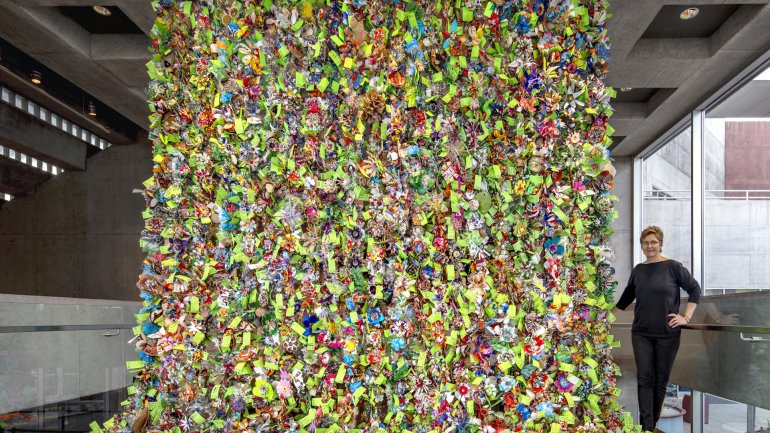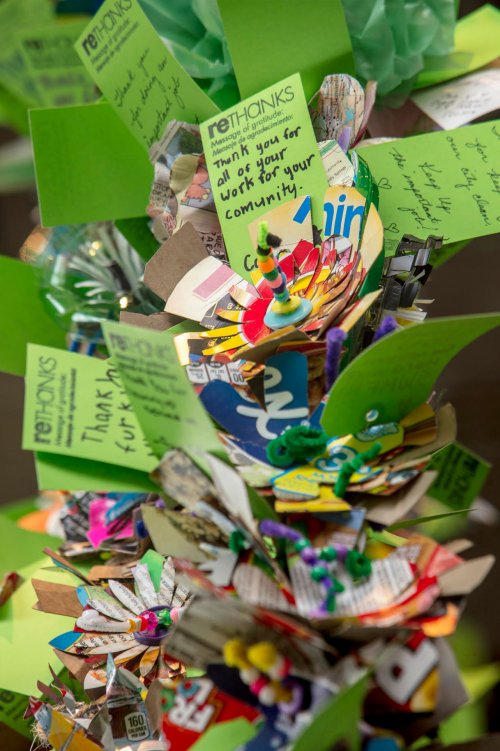Ann Morton's Treasured Trash
In the August/September 2015 issue of American Craft, Monica Moses talked with Ann Morton about her project “What Happened Today?” in which the fiber artist, along with more than 100 volunteers, juxtaposed a quilt made up of handwritten notes about the ordinary events of Houstonians with a tufted rug made of pages from the Houston Chronicle. “Those conversations, those connections, those experiences are all part of this project,” Morton said. “And that is what I find the most wonderful part.”
Two years later, the Phoenix-based Morton embarked on another community-minded project. With ReThanks, commissioned by the City of Phoenix Office of Arts and Culture, she invited area makers to pay tribute to the workers who deal with the city’s trash and recycling. Participants created flowers out of their own recyclable trash and, once the goal of 3,000 flowers was reached, they were made into a textile hanging at the Arizona Science Center from March through September of this year. Each flower carries a note of thanks to a worker.
“I’ve learned that what I am best at doing is finding unexpected ways for the work to respond to the issues that are immediately in front of me,” Morton says, and ReThanks certainly fit that mold. The resulting tapestry was visually stunning, revealing the breadth of hue and texture that sits in the world’s recycling bins, but it also celebrated the people who deal with it every day. The sheer size of the piece – Morton stood less than half its height – demonstrated how fundamental to our society these materials are, and how much the workers are needed.
Morton’s career has brought her international acclaim; her work has been shown in the US, Australia, Israel, and Brazil. No two projects are alike, in subject matter or execution. Still, for the artist, it all comes down to recognizing the dignity and beauty of the individual. “I hope that with the work that I do,” she says, “I can find ways to highlight things unseen, or unsung players in our society.”


